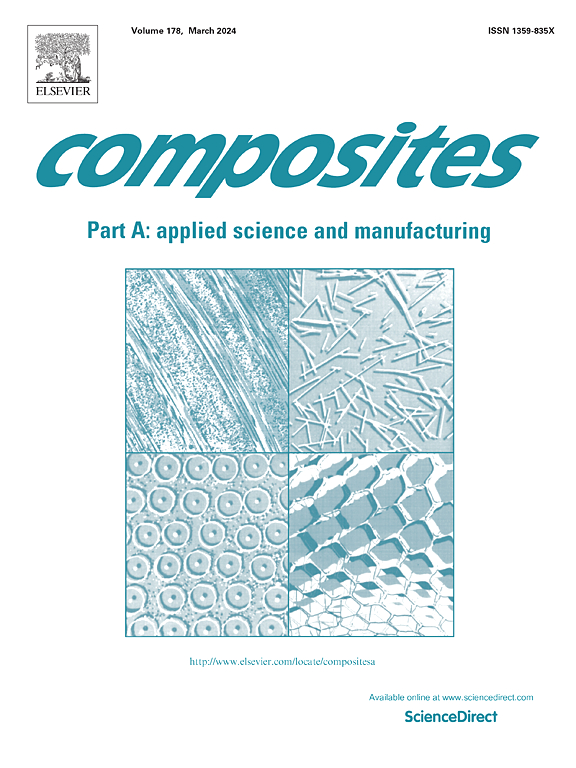Epoxy microlattice with simultaneous self-sensing and electromagnetic interference shielding performance by in-situ additive manufacturing
IF 8.1
2区 材料科学
Q1 ENGINEERING, MANUFACTURING
Composites Part A: Applied Science and Manufacturing
Pub Date : 2024-10-12
DOI:10.1016/j.compositesa.2024.108521
引用次数: 0
Abstract
The development of epoxy nanocomposite architectures capable of self-sensing the internal structural response to mechanical stimuli and exhibiting multifunctionality represents a significant challenge to the scientific community. Here, an in-situ additive manufacturing technique is developed to construct robust SiO2/epoxy host material and piezoresistive nanocarbon/epoxy sensing elements into an engineered 3D microlattice. The integration of microscale sensing elements with tailored embedment locations and contents enables the real-time detection of in-situ strain under varying loadings, without compromising the mechanical properties of the original host structure. Additionally, the epoxy microlattices containing 3D interconnected network of sensing elements present excellent electromagnetic interference shielding properties, attaining a high shielding effectiveness of up to 33 dB. Furthermore, the applications of the epoxy microlattice in defect-recognizable composite lattices and multifunctional protective devices are demonstrated. The present findings suggest an effective strategy for the development of intrinsically smart epoxy nanocomposites with customized microstructure and unprecedented multifunctionality.
通过原位增材制造实现同时具有自感应和电磁干扰屏蔽性能的环氧微晶格
开发能够自我感知内部结构对机械刺激的响应并表现出多功能性的环氧纳米复合材料结构是科学界面临的一项重大挑战。本文开发了一种原位增材制造技术,将坚固的二氧化硅/环氧树脂主材料和压阻纳米碳/环氧树脂传感元件构建成工程三维微晶格。将具有定制嵌入位置和内容的微尺度传感元件集成在一起,可在不影响原始主结构机械性能的情况下实时检测不同载荷下的原位应变。此外,包含三维互联传感元件网络的环氧微晶格具有出色的电磁干扰屏蔽性能,屏蔽效果高达 33 dB。此外,研究还展示了环氧微晶格在缺陷可识别复合晶格和多功能保护装置中的应用。本研究结果为开发具有定制微结构和前所未有的多功能性的内在智能环氧纳米复合材料提供了有效策略。
本文章由计算机程序翻译,如有差异,请以英文原文为准。
求助全文
约1分钟内获得全文
求助全文
来源期刊

Composites Part A: Applied Science and Manufacturing
工程技术-材料科学:复合
CiteScore
15.20
自引率
5.70%
发文量
492
审稿时长
30 days
期刊介绍:
Composites Part A: Applied Science and Manufacturing is a comprehensive journal that publishes original research papers, review articles, case studies, short communications, and letters covering various aspects of composite materials science and technology. This includes fibrous and particulate reinforcements in polymeric, metallic, and ceramic matrices, as well as 'natural' composites like wood and biological materials. The journal addresses topics such as properties, design, and manufacture of reinforcing fibers and particles, novel architectures and concepts, multifunctional composites, advancements in fabrication and processing, manufacturing science, process modeling, experimental mechanics, microstructural characterization, interfaces, prediction and measurement of mechanical, physical, and chemical behavior, and performance in service. Additionally, articles on economic and commercial aspects, design, and case studies are welcomed. All submissions undergo rigorous peer review to ensure they contribute significantly and innovatively, maintaining high standards for content and presentation. The editorial team aims to expedite the review process for prompt publication.
 求助内容:
求助内容: 应助结果提醒方式:
应助结果提醒方式:


